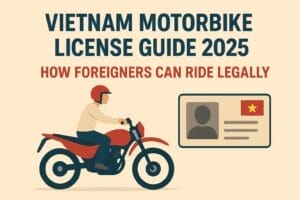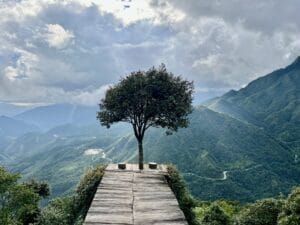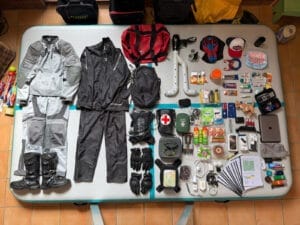6-Day North Vietnam Offroad Motorbike Tour to Ba Be Lake, Ha Giang, Dong Van, Sapa, and Thac Lake
Northern Vietnam is renowned for its stunning landscapes, towering mountain passes, and vibrant ethnic cultures, making it one of the best destinations for motorbike enthusiasts. Riders can explore the rugged terrain of the Ha Giang Loop, the serene beauty of the terraced rice fields in Sapa, and the majestic waterfalls of Ban Gioc. Choosing the best time to visit is crucial to enjoying the full potential of these breathtaking routes, ensuring optimal weather conditions and safety.
1. Overview of Northern Vietnam’s Climate
Northern Vietnam experiences four distinct seasons: spring, summer, autumn, and winter. Each season provides unique experiences for motorbike riders, and understanding the climate helps you choose the perfect time for your journey.
|
Season |
Months |
Average Temperature |
Characteristics |
|
Spring |
March – April |
15°C – 25°C (59°F – 77°F) |
Mild temperatures with blooming flowers and clear skies. |
|
Summer |
May – August |
25°C – 35°C (77°F – 95°F) |
Hot and humid with occasional rainfall, but vibrant greenery. |
|
Autumn |
September – November |
15°C – 25°C (59°F – 77°F) |
Cool, dry weather with stunning golden rice fields. Ideal for long rides. |
|
Winter |
December – February |
10°C – 20°C (50°F – 68°F) |
Cold and foggy, especially in higher altitudes like Sapa and Ha Giang. |
2. Best Time to Visit Northern Vietnam for Motorbike Tours
The best times to visit Northern Vietnam for motorbike tours are during the spring (March to April) and autumn (September to November). These seasons offer mild temperatures, clear skies, and scenic beauty, providing the best riding conditions.
- Spring (March to April): During this time, Northern Vietnam bursts with color as flowers bloom across the countryside. The weather is perfect for outdoor activities, and the rice terraces begin to turn green, making for picturesque views.
- Autumn (September to November): This period is ideal for motorbike tours due to the cooler temperatures and stunning landscapes, especially in places like Sapa and Mu Cang Chai, where golden rice terraces are at their peak.
3. Must-Visit Destinations in Northern Vietnam
3.1 Ha Giang Loop
The Ha Giang Loop is one of the most iconic motorbike routes in Vietnam. This route takes riders through awe-inspiring mountain passes, past deep valleys, and into remote ethnic villages, offering a raw, unfiltered view of the region.
- Highlights:
- Ma Pi Leng Pass: Known for its dramatic scenery, this pass is one of the most beautiful in Vietnam, offering sweeping views over the Nho Que River.
- Dong Van Karst Plateau: A UNESCO Global Geopark, this area is known for its limestone formations and traditional Hmong villages.
- Lung Cu Flag Tower: The northernmost point of Vietnam, where you can take in panoramic views of the Chinese border.
Visit more: Top Ha Giang Loop Motorcycle Tours
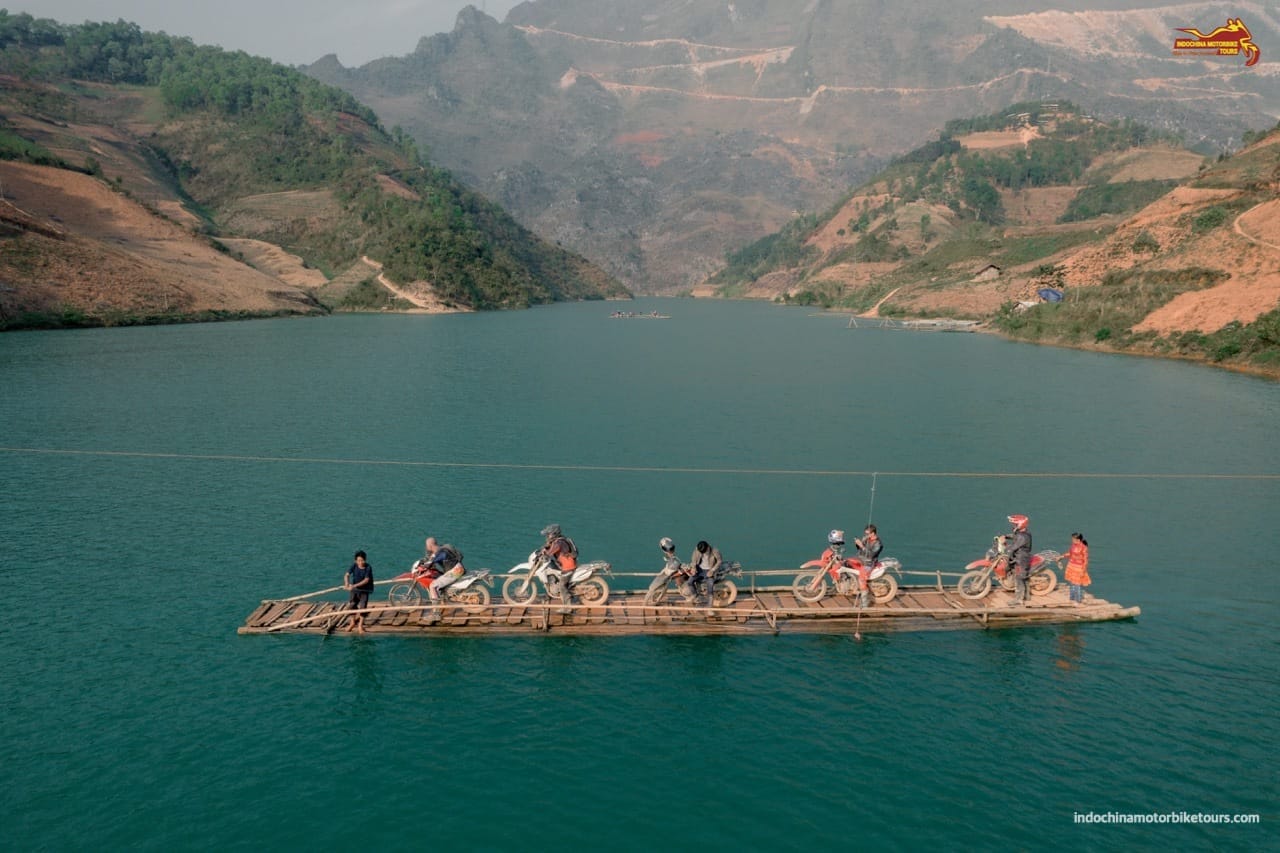
3.2 Sapa and Ta Xua
Sapa, with its cool climate and famous terraced rice fields, is a top destination for riders. However, nearby Ta Xua has gained popularity recently as a new “cloud-hunting” hotspot, where riders can experience breathtaking views of floating clouds over the mountains.
- Sapa Highlights:
- Muong Hoa Valley: Famous for its stunning terraced rice fields and ethnic minority villages like Ta Van and Cat Cat.
- Fansipan Mountain: Known as the “Roof of Indochina,” Fansipan is the highest peak in Vietnam. Riders can either trek or take a cable car for incredible views.
- Ta Xua Highlights:
- Cloud Hunting: Ride up to the high altitudes of Ta Xua for a chance to see the sea of clouds, a phenomenon that occurs mainly during the autumn and winter months.
- Ta Xua Dinosaur Spine: A unique ridge that offers dramatic views over the valleys below.
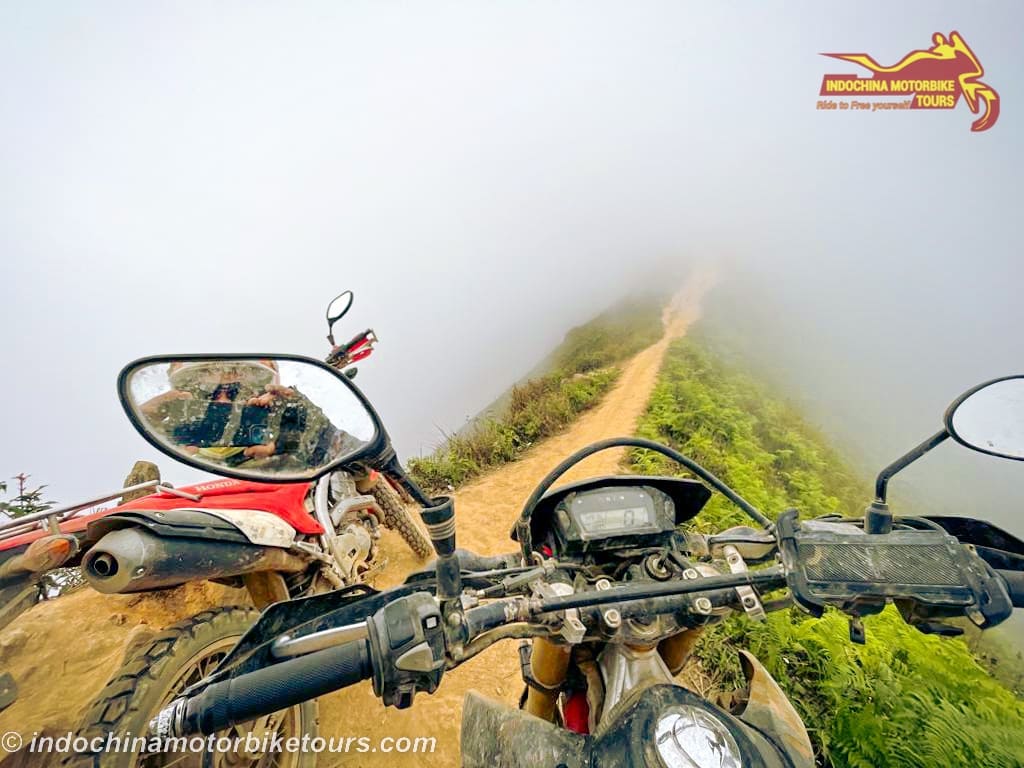
3.3 Mu Cang Chai
Mu Cang Chai is a hidden gem famous for its terraced rice fields, especially during the harvest season from September to October. This area offers riders a peaceful, scenic route away from the crowds of more touristy destinations.
- Highlights:
- Terraced Rice Fields: The golden terraces during harvest time are some of the most stunning in Vietnam, offering great photo opportunities.
- Local Culture: Visit the ethnic minority villages to learn about traditional farming techniques and local lifestyles.
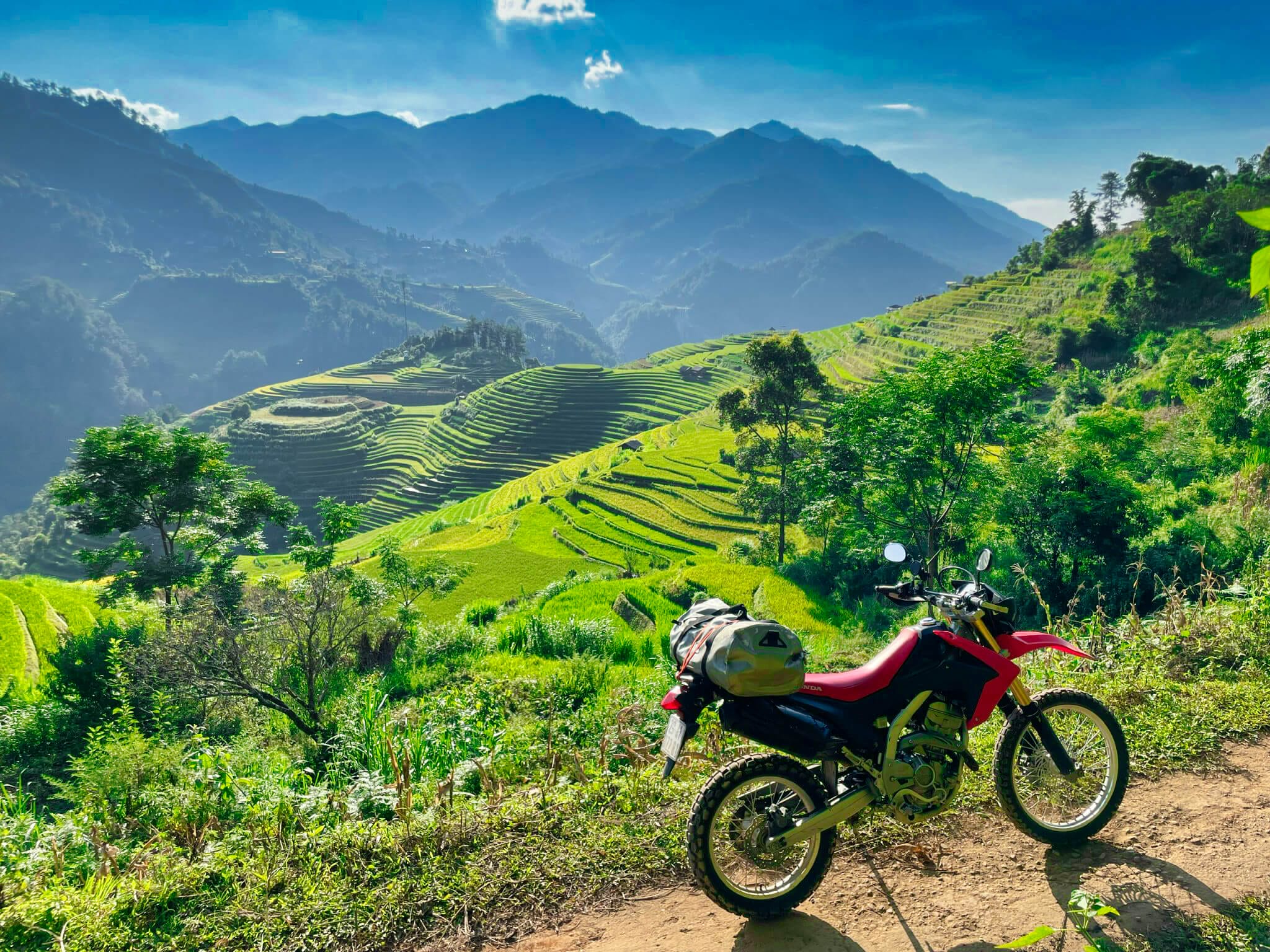
Breathtaking Vietnam Dirt Bike Tour To Ha Giang, Sapa via Ngoc Chien and Ta Xua
3.4 Ban Gioc Waterfall
Located on the border between Vietnam and China, Ban Gioc Waterfall is one of the most spectacular natural wonders in Vietnam. Riding to this remote waterfall offers an adventurous and rewarding experience for motorbike enthusiasts.
- Highlights:
- Ban Gioc Waterfall: The largest waterfall in Vietnam, offering breathtaking views and a refreshing atmosphere. You can take a bamboo raft to get closer to the falls.
- Nguom Ngao Cave: A nearby cave with impressive limestone formations, perfect for a short stop on your ride.
- Pac Bo Cave: A significant historical site where Ho Chi Minh lived during the revolutionary period.
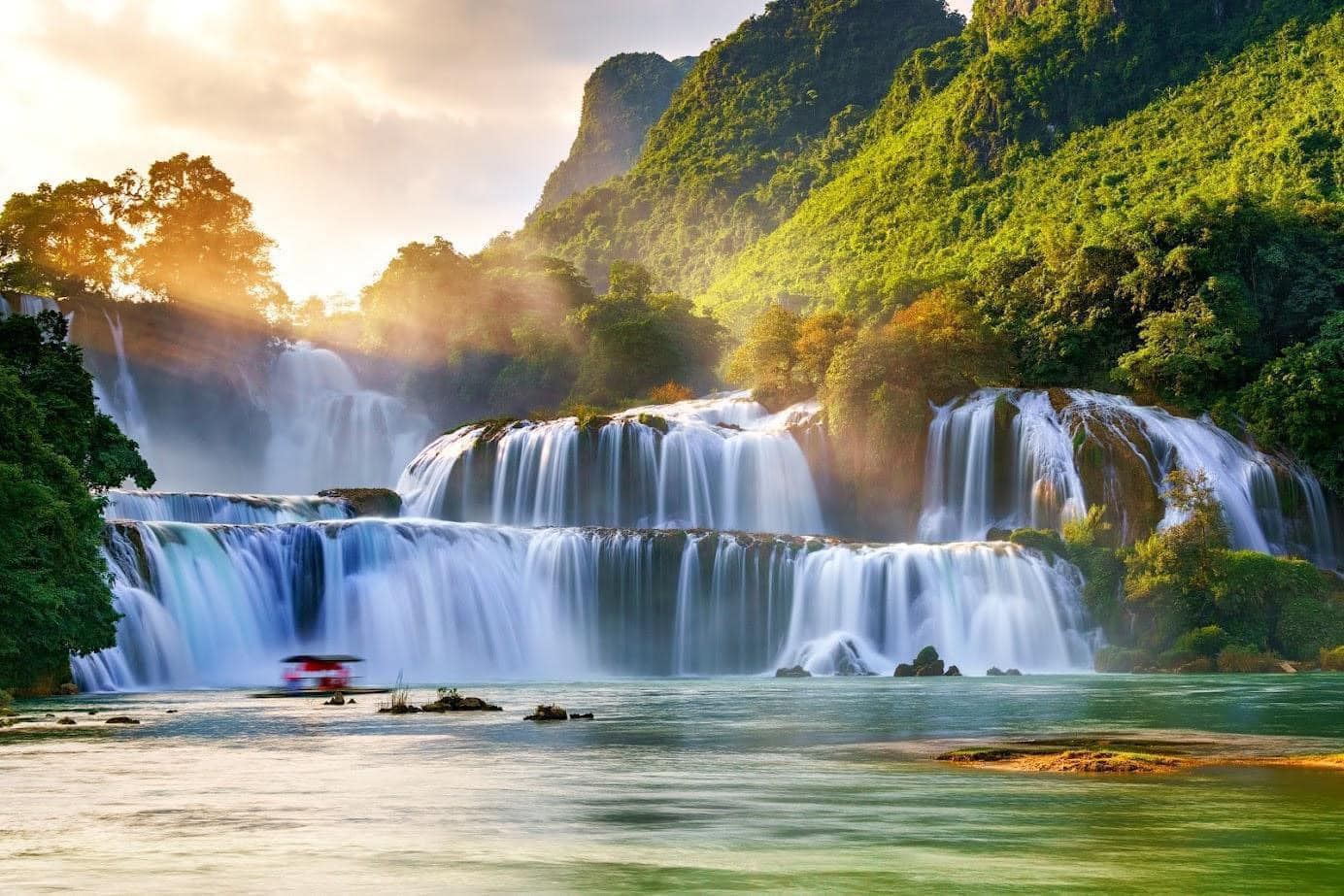
Challenging Vietnam Motorcycle Tour to Ha Giang, Ban Gioc Waterfall and Ba Be Lake
4. Activities at Northern Vietnam Destinations
- Cloud Hunting in Ta Xua: This activity has become increasingly popular as more riders head to Ta Xua for its unique cloud formations, especially from late September to March.
- Photography in Mu Cang Chai and Sapa: The terraced rice fields are ideal for photography enthusiasts, particularly during the harvest season.
- Exploring Caves and Waterfalls: Ban Gioc Waterfall and Nguom Ngao Cave offer natural beauty and adventure, with opportunities for photography, rafting, and cave exploration.
5. FAQs for Motorbike Tours in Northern Vietnam
What is the best time to visit Northern Vietnam for a motorbike tour?
The best time to visit Northern Vietnam for a motorbike tour is from March to April (spring) and September to November (autumn). These months offer mild weather, clear skies, and stunning landscapes.
Are the roads in Northern Vietnam safe for motorbike riding?
While many roads are in good condition, some mountainous areas like Ha Giang and Ban Gioc may have steep and winding paths, which are better suited for experienced riders. Always ensure your motorbike is in good condition, and ride cautiously, especially during rainy or foggy weather.
What gear should I bring for a motorbike tour in Northern Vietnam?
You should bring a quality helmet, protective clothing, gloves, sturdy shoes, and waterproof gear. In the colder months, extra layers are essential as temperatures can drop significantly, especially in higher altitudes like Sapa and Ha Giang.
Can beginners do the Ha Giang Loop?
While the Ha Giang Loop is more suited to intermediate and advanced riders due to its challenging mountain roads, beginners can attempt it with caution and perhaps hire a local guide to help navigate the more difficult sections.
How long should I plan for a motorbike tour in Northern Vietnam?
A tour of Northern Vietnam can range from 5 days to 2 weeks, depending on the routes and areas you wish to cover. The Ha Giang Loop typically takes 4-5 days, while adding Sapa, Mu Cang Chai, and Ban Gioc Waterfall will extend the trip.
Can I rent a motorbike in Northern Vietnam?
Yes, motorbike rentals are available in major cities like Hanoi, Ha Giang, and Sapa. Make sure to check the motorbike’s condition before renting, and always carry the necessary paperwork, including your license and insurance.
Conclusion
Northern Vietnam offers some of the most breathtaking landscapes and challenging yet rewarding motorbike routes in the country. Whether you’re cloud-hunting in Ta Xua, riding through the majestic rice terraces of Mu Cang Chai, or exploring the remote mountain passes of Ha Giang, this region provides unforgettable experiences for any rider. For the best conditions, plan your motorbike tour during the spring or autumn months when the weather is cool, dry, and perfect for adventure.

